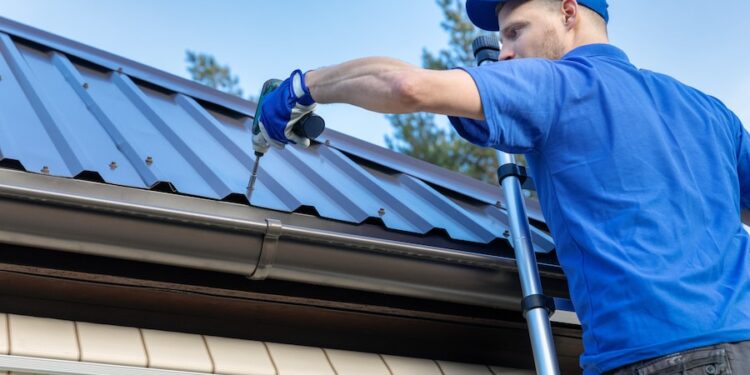Roofing is one of the most crucial aspects of a property, protecting it from weather conditions and enhancing its overall appearance. A well-constructed roof not only provides safety but also increases the value of a home. Whether you are planning a new installation, replacement, or regular maintenance, understanding the essentials of roofing will help you make informed decisions. This guide covers the most important aspects of roofing, including materials, styles, installation methods, maintenance, and cost considerations.
Importance of Roofing
Your roof is the first line of defence against rain, wind, snow, and heat. Without a reliable roof, a house quickly becomes vulnerable to structural damage, dampness, and reduced energy efficiency. Choosing the right roofing system ensures long-term durability and enhances comfort indoors.
Key reasons roofing is important include:
-
Protects the structural integrity of a building
-
Provides insulation for better energy efficiency
-
Adds aesthetic value to the property
-
Increases resale value and curb appeal
-
Reduces long-term repair and maintenance costs
Types of Roofing Materials
Selecting the right material is one of the biggest decisions in any roofing project. Each material has unique advantages, costs, and maintenance requirements.
Asphalt Shingles
-
Cost-effective and widely available
-
Easy to install and replace
-
Available in various colours and textures
-
Lifespan of 15–30 years depending on quality
Slate Roofing
-
Known for exceptional durability and natural beauty
-
Can last over 100 years with proper maintenance
-
Resistant to fire and extreme weather
-
Heavier than other materials, requiring strong roof support
Clay and Concrete Tiles
-
Stylish and long-lasting
-
Resistant to heat and fire
-
Common in Mediterranean and traditional architectural styles
-
Heavier than shingles, often requiring structural reinforcement
Metal Roofing
-
Lightweight and durable
-
Energy-efficient by reflecting sunlight
-
Available in sheets, shingles, or tiles
-
Lifespan of 40–70 years
Wooden Shingles and Shakes
-
Natural and rustic appearance
-
Requires regular treatment to prevent decay
-
Suitable for traditional or heritage-style properties
Green Roofs
-
Eco-friendly and modern
-
Covered with vegetation for natural insulation
-
Improves air quality and reduces urban heat
-
Requires specialised installation and upkeep
Choosing the Right Roofing Style
The style of your roof plays a vital role in both aesthetics and function. Popular roof styles include:
-
Gable Roofs: Simple triangular shape, cost-effective, and excellent for water drainage.
-
Hip Roofs: Slopes on all sides, offering better wind resistance.
-
Flat Roofs: Modern look, suitable for extensions and commercial properties.
-
Mansard Roofs: Steep lower slopes with a flat top, often seen in traditional European designs.
-
Skillion Roofs: Single sloping surface, providing a contemporary appeal.
Roof Installation Process
Installing a roof involves multiple stages, each requiring professional attention for long-lasting results.
-
Inspection and Planning – Assessing the property and choosing suitable materials.
-
Removing the Old Roof – Carefully stripping off existing layers to prepare for installation.
-
Structural Preparation – Reinforcing support systems, especially for heavier materials like tiles or slate.
-
Underlayment Installation – Applying protective layers that act as barriers against water.
-
Roof Covering – Fixing the chosen material securely.
-
Finishing Touches – Adding flashing, gutters, and ventilation to complete the system.
Common Roofing Problems
Over time, roofs may develop issues that need prompt repair. Some of the most common problems include:
-
Leaks and water damage
-
Broken or missing shingles
-
Sagging roof structure
-
Poor ventilation leading to condensation
-
Moss and algae growth
-
Cracks in flashing around chimneys or skylights
Roofing Maintenance Tips
Proper maintenance can significantly extend the life of your roof. Homeowners should consider the following practices:
-
Inspect the roof at least twice a year, especially after storms
-
Clean gutters to prevent water backup
-
Trim overhanging branches to reduce debris accumulation
-
Remove moss and algae using safe cleaning methods
-
Check attic insulation and ventilation
-
Repair minor issues before they develop into costly damage
Roofing Costs and Budgeting
The cost of roofing depends on several factors:
-
Type of material chosen
-
Size and slope of the roof
-
Labour and installation complexity
-
Additional features like skylights, chimneys, or ventilation systems
Budgeting wisely ensures that you get long-term value without compromising on quality.
Sustainability in Roofing
Modern homeowners are increasingly choosing eco-friendly options. Sustainable roofing solutions help reduce environmental impact and improve efficiency. Options include:
-
Recycled metal roofing
-
Solar-integrated roofing tiles
-
Green living roofs
-
Cool roof coatings that reflect heat
Hiring a Professional Roofer
While minor repairs can be handled independently, most roofing projects require professional expertise. A skilled roofer ensures safety, proper installation, and adherence to building regulations. When hiring:
-
Check credentials and certifications
-
Review previous projects or references
-
Ensure insurance and warranties are in place
-
Get multiple quotes for comparison
FAQs About Roofing
How long should a roof last in the UK?
Most roofs last between 20 and 70 years, depending on the material. Slate and tile roofs often outlast asphalt shingles.
What signs show that a roof needs replacing?
Frequent leaks, sagging, widespread moss, and missing or broken tiles are strong indicators that a replacement may be required.
Can a roof be installed during winter?
Yes, but cold weather can affect installation quality. It’s best to schedule major work in spring or summer.
What is the most cost-effective roofing option in the UK?
Asphalt shingles are generally the most affordable, while metal and tile roofs offer better long-term value.
Do I need planning permission to replace my roof?
Most replacements don’t require planning permission, but significant structural changes or listed buildings may need approval.
How often should I clean my roof?
Ideally every 1–2 years, depending on the location and level of debris build-up. Regular cleaning helps prevent moss and water damage.





